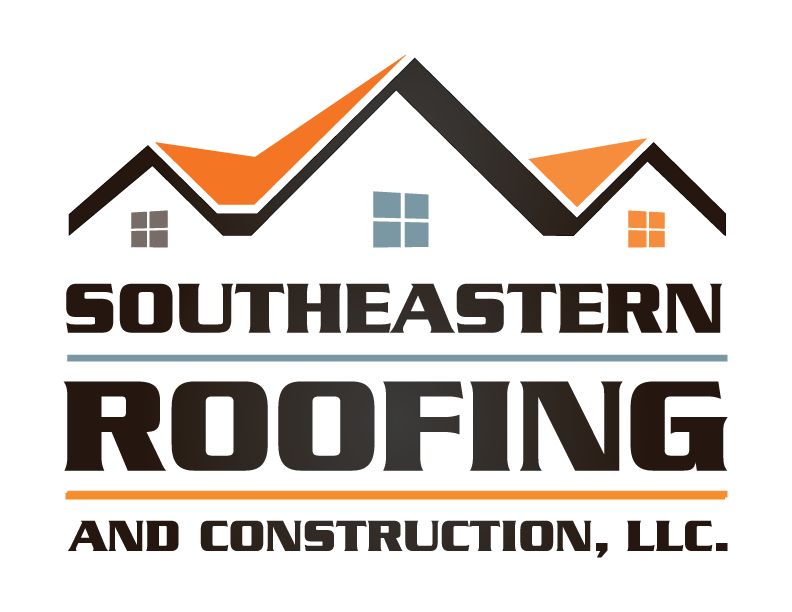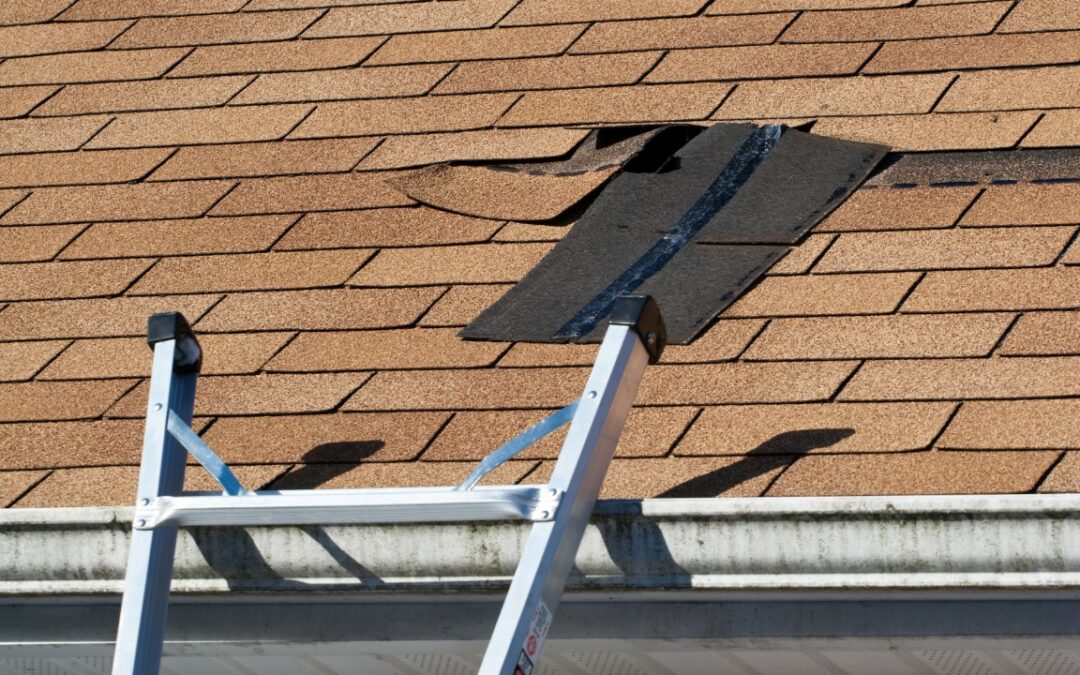Are you worried about the condition of your roof? We’ve got you covered.
In this article, we’ll walk you through the key symptoms to watch for when detecting roof damage. From missing or damaged shingles to leaks and water stains, we’ll provide you with the knowledge you need to identify potential issues.
Don’t let your roof become a headache – let us help you keep it in top shape.
Key Takeaways
- Missing or damaged shingles can expose the roof to water leaks and further damage.
- Leaks or water stains on the ceiling or walls are clear indications of a leakage problem.
- Discoloration on the ceiling is a sign of water leakage and potential structural issues.
- Regular roof maintenance and prompt addressing of issues can prevent costly repairs and protect the integrity of the roof.
Missing or Damaged Shingles
We often notice missing or damaged shingles on roofs as a clear indication of roof damage. Regular roof maintenance is essential to prevent costly repairs in the future. When shingles go missing or become damaged, it exposes the underlying layers of the roof to potential water leaks and further damage. Not only does this compromise the integrity of the roof, but it can also lead to increased roof repair costs.
It’s crucial to address missing or damaged shingles promptly to avoid more extensive issues. If left unattended, water can seep into the roof structure, causing leaks or water stains on the interior ceiling. These signs of water damage can indicate a more significant problem and should be addressed immediately to prevent further damage and protect the overall integrity of the roof.
Leaks or Water Stains
When it comes to detecting roof damage, leaks or water stains are key symptoms to watch for. Discoloration on the ceiling or walls is a clear indication of a leakage problem. These water stains can also be signs of water damage, which can lead to structural issues if left unchecked.
It’s important to regularly inspect your roof for any signs of leaks or water stains and address them promptly to prevent further damage.
Discoloration Indicates Leakage
One key symptom of roof damage is the presence of water stains or leaks, which can be identified by discoloration on the ceiling. Roof discoloration is a clear indicator of water leakage, and it shouldn’t be ignored.
When water infiltrates the roof, it can seep into the structure of your home, causing damage to the ceiling and walls. This can lead to the growth of mold and mildew, which can be harmful to your health.
If you notice any discoloration on your ceiling, it’s important to address the issue promptly. Contact a professional roofer to inspect and repair any damage to your roof to prevent further leakage and potential structural problems.
Signs of Water Damage
Water damage is a common issue that can occur on roofs, often manifesting as leaks or water stains. It’s crucial to address these signs promptly to prevent further damage and costly repairs.
Regular roof maintenance is essential in preventing water damage. One of the key signs to watch for is leaks. If you notice water dripping from your ceiling or find puddles on your floor, your roof likely leaks.
Another sign of water damage is water stains. These stains can appear on your ceiling or walls and are usually brown or yellow. It’s important to address these signs immediately to prevent further water damage and ensure the integrity of your roof.
Regular inspections and maintenance can help identify and resolve these issues before they escalate.
Watch for Staining
We noticed several staining issues on our roof, specifically leaks and water stains. Stains on the roof can be indicators of underlying problems and shouldn’t be ignored. Preventing roof stains is important for maintaining the integrity of your roof and preventing further damage.
Common causes of roof stains include algae, moss, and lichen growth, as well as debris buildup and poor drainage. Regular roof maintenance, such as cleaning the gutters and removing debris, can help prevent these issues. Additionally, ensuring proper ventilation in your attic can help prevent moisture buildup and minimize the risk of roof stains.
By addressing these common causes and implementing roof stain prevention measures, you can protect your roof and extend its lifespan.
Now, let’s move on to the next section, where we’ll discuss the importance of watching for sagging or uneven roofs.
Sagging or Uneven Roof
When it comes to roof damage, one key symptom to watch out for is a sagging or uneven roof. This can be caused by a variety of factors, including structural issues, water damage, or the weight of heavy snow or debris.
If you notice any signs of sagging or unevenness in your roof, it’s important to address the issue promptly to prevent further damage and potential collapse.
In the following sections, we’ll discuss the common causes of roof sagging and the steps involved in repairing an uneven roof.
Causes of Roof Sagging
While inspecting for roof damage, it’s important to understand the causes of roof sagging, which can result in a sagging or uneven roof. Roof sagging is often caused by several factors, including structural issues, excessive weight on the roof, and poor installation or maintenance.
One of the most common causes of roof sagging is the weakening of roof trusses or rafters due to age, water damage, or insect infestation. Additionally, if the roof has been subjected to excessive weight from snow accumulation, heavy equipment, or improper storage, it can lead to sagging. Lastly, poor installation or lack of maintenance can result in an uneven roof.
By understanding these causes, homeowners can take the necessary steps to prevent or address roof sagging before it leads to further damage or safety concerns.
Transitioning into the subsequent section about repairing an uneven roof, it’s crucial to know the signs and solutions to effectively address this issue.
Repairing Uneven Roof
Addressing an uneven roof involves identifying the underlying causes and implementing appropriate repairs.
When it comes to repairing damaged shingles, it’s important to carefully remove the damaged ones and replace them with new ones. Start by removing the nails holding the damaged shingles in place and gently lift them away from the roof. Once the damaged shingles have been removed, install new shingles in their place, making sure to align them properly and secure them with nails.
Additionally, preventing roof sagging requires addressing the structural issues that may be causing it. This may involve reinforcing the roof trusses or beams and ensuring they’re properly aligned and supported.
Regular inspections and maintenance can help identify any potential issues and prevent roof sagging before it becomes a major problem.
Cracked or Split Flashing
Inspecting for cracked or split flashing is an essential step in detecting roof damage. Roof flashing is a thin sheet of metal or other waterproof material that’s installed around roof intersections and other vulnerable areas to prevent water from seeping into the structure. When the flashing becomes cracked or split, it can no longer effectively redirect water away from these areas, leading to potential roof leaks.
It’s crucial to regularly inspect the flashing for any signs of damage and promptly address any issues to prevent further damage and costly repairs. Roof flashing repair should be done by a professional roofing contractor who has the expertise and knowledge to accurately assess the extent of the damage and provide the necessary repairs.
Granule Loss on Shingles
To continue our examination of roof damage symptoms, let’s now discuss the issue of granule loss on shingles, a common problem that can indicate potential roofing issues.
Granules are the small, sand-like particles that cover the surface of shingles. They serve an important purpose by protecting the shingles from UV rays and providing fire resistance.
When granules start to loosen or fall off, it can be a sign of aging or damage to the shingles. This can occur due to various reasons, such as hailstorms, extreme weather conditions, or improper installation.
Granule loss can lead to further deterioration of the shingles, making them more susceptible to leaks and other forms of damage.
Regular roof maintenance is essential to identify granule loss early and prevent bigger problems down the road. If left unaddressed, extensive granule loss may require roof replacement to ensure the structural integrity of your home.
Mold or Mildew Growth
As we continue our examination of roof damage symptoms, another key issue to be aware of is the presence of mold or mildew growth, which can indicate potential roofing problems.
Mold and mildew thrive in damp and humid environments, and if they’re present on your roof, it suggests that moisture is seeping through. This can be caused by leaks, poor ventilation, or improper installation.
Mold and mildew not only pose a threat to the integrity of your roof but also to your health. Mold exposure can lead to respiratory issues, allergies, and other health risks.
To prevent mold growth, it’s important to address any moisture issues promptly and ensure proper ventilation.
Now, let’s move on to the next topic, which is the soft or rotting roof deck.
Soft or Rotting Roof Deck
When moisture seeps through a roof, it can result in a soft or rotting roof deck, indicating a potential roofing problem. A soft roof deck occurs when the underlying structure of the roof, typically made of plywood or oriented strand board (OSB), becomes weakened and loses its structural integrity. This can happen due to prolonged exposure to moisture, such as from leaking or damaged shingles, improper installation, or inadequate ventilation.
Signs of a soft or rotting roof deck include sagging or uneven areas on the roof, a spongy feeling when walking on the roof, or visible signs of decay or rot. If you notice any of these signs, it’s crucial to address the issue promptly.
Soft roof deck repair may involve replacing the damaged sections of the deck and ensuring proper ventilation to prevent future moisture-related problems. Regular inspections and maintenance can help identify and prevent this issue, ensuring the longevity and stability of your roof.
Animal or Pest Infestation
We often encounter animal or pest infestation as another potential roofing problem that can be a direct result of a soft or rotting roof deck.
Animal infestation refers to the presence of unwanted animals such as raccoons, squirrels, or birds that make a home on your roof.
A pest infestation, on the other hand, involves the invasion of insects or rodents like termites, ants, or mice.
Both types of infestations can cause significant damage to your roof, compromising its structural integrity and leading to further issues such as leaks or mold growth.
Signs of animal or pest infestation include scratching or scurrying noises, droppings, nests, or chewed wires.
If you suspect an animal or pest infestation, it’s crucial to address the issue promptly to prevent further damage and ensure the safety of your roof.
Conclusion
In conclusion, being aware of the key symptoms of roof damage can save you from costly repairs and potential hazards. By keeping an eye out for:
- Missing or damaged shingles
- Leaks or water stains
- Sagging or uneven roof
- Cracked or split flashing
- Granule loss on shingles
- Mold or mildew growth
- Soft or rotting roof deck
- Animal or pest infestations
You can ensure the longevity and safety of your roof. Remember, a stitch in time saves nine!

